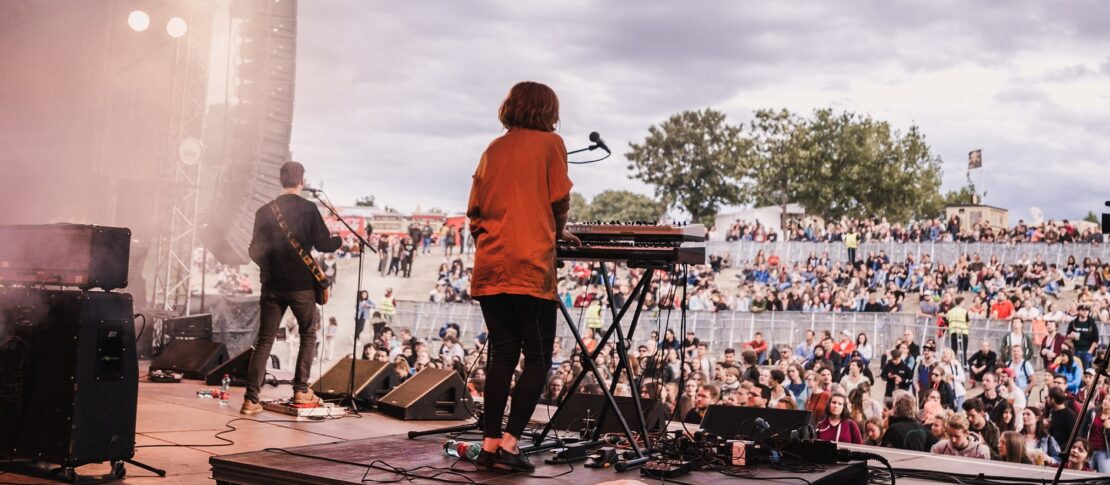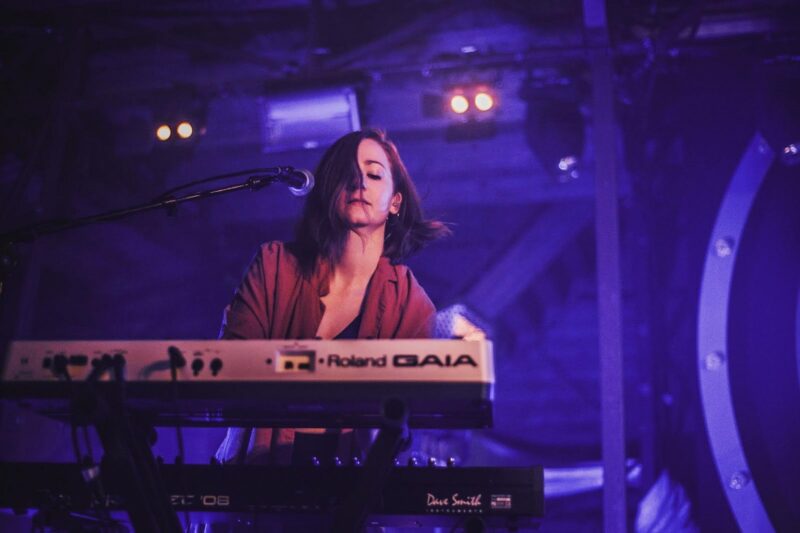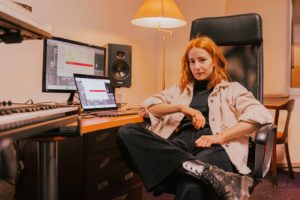
Playing synths in an electro-pop-rock band
Originally, my background was in classical music education, where studying Bach, continuo and finger techniques were part of my daily routine. Combine that with the idyllic image of my childhood; a tiny village, meadows, fields, a big family, and practicing in churches and chamber music halls, and you get something that is actually quite pleasant.
However at some point I wanted to move on, and it was electronic music that made me do it. I think it was when I heard James Blake live for the first time, it was clear to me that I wanted to make music inspired by that.
User manuals and Youtube Pandora
Using synths without knowing anything about electronic music beforehand is comparable to learning a whole new instrument. I quickly realized this, and locked myself in my room for what felt like the whole summer, going through user manuals and endless YouTube tutorials. Even though I ended up looking like a vampire, the time I had invested was worth it. At first, it’s tiring not to be able to create the sounds that you know … and this frustration easily cost me a few days of my life.
At some point however the understanding of sound creation and the know-how of working with all those things changed, and voilá, I had taken the next step in making the first album with Naked Cameo. During that production I was challenged for the first time to get the sounds and voices right from that spot. It was not that easy at the beginning, but the preliminary work proved essential and definitely important for the whole process.
Music Production and Arrangement
Further down the line, dealing with music production became one of the most important aspects for me. Certain questions kept me busy, likes why are synths essential in certain places in songs, why do they become necessary when used as layering with guitar riffs for example, or why and how can plug-ins be beneficial? I learned about pop song structures and how they work, so that the three of us in the band could arrange the tracks and recognize the relevance of each individual sound in order to create our own sonic aesthetic.
Analyzing, listening to, replaying and reconstructing the sounds of productions from different artists can help you get a better understanding of structures and arrangements, so that you can start to apply them yourself. Through this process I have certainly been influenced a lot by my favorite artists, like Glass Animals and Sevdaliza, whose arrangements really move my soul. As a counterpart to that, I’ve always tried to listen to other genres of music more consciously and let them inspire me. Even if one doesn’t realize it from the beginning, it is a massive influence on one’s own artistic work.

Why still play synths in analog?
The necessity to play and record synths in analog has somewhat diminished due to the wide range of software synths available today. So why do I do it anyway? In short, because it’s the sometimes imperfect, audible human playing that makes the sound more organic. Of course, this doesn’t happen if I play an unprocessed saw-wave and then shred everything to pieces. But for example by adjusting filters by hand, or by doing freehand pitch runs, it all becomes audible, creating a sound that is not easily replicable with DAW tools.
Perpetual search for inspiration and further education
In the end I think I can say that the time I invested with different instruments, analyzing various productions and arrangements and the individual sources of inspiration were essential. All of these activities — which are ever constant learning practices — arouse more and more inspiration. That’s what makes it fun for me, and in the end it’s very fulfilling.
